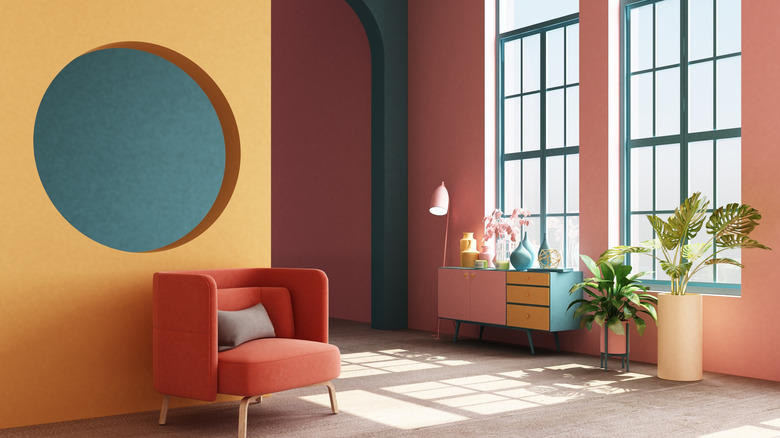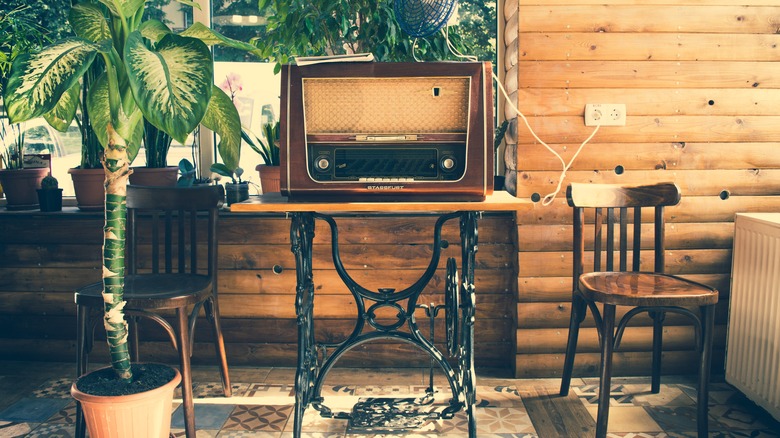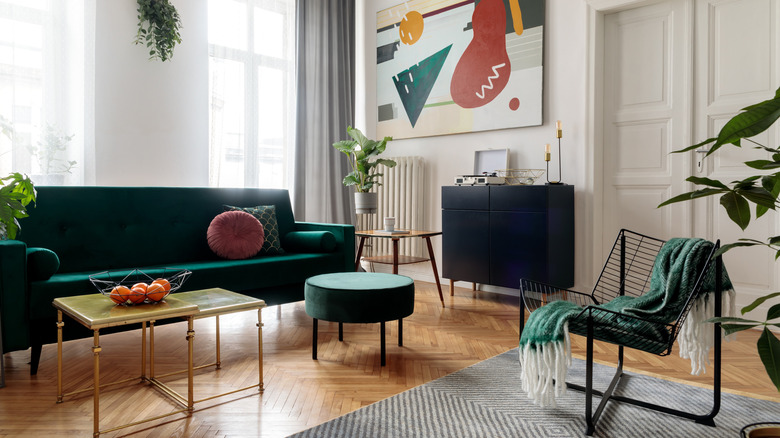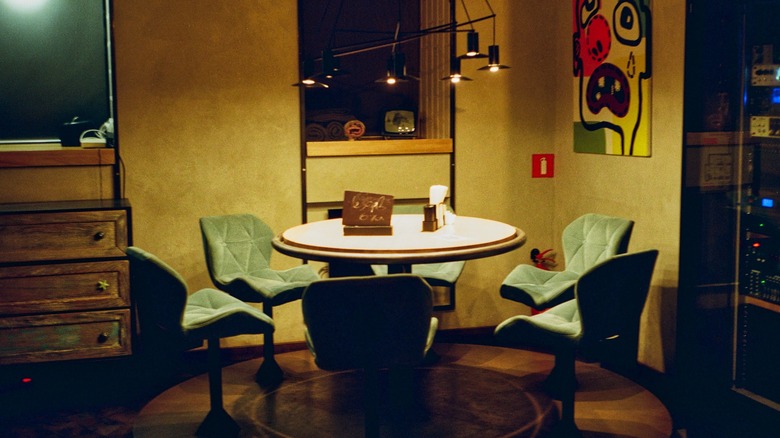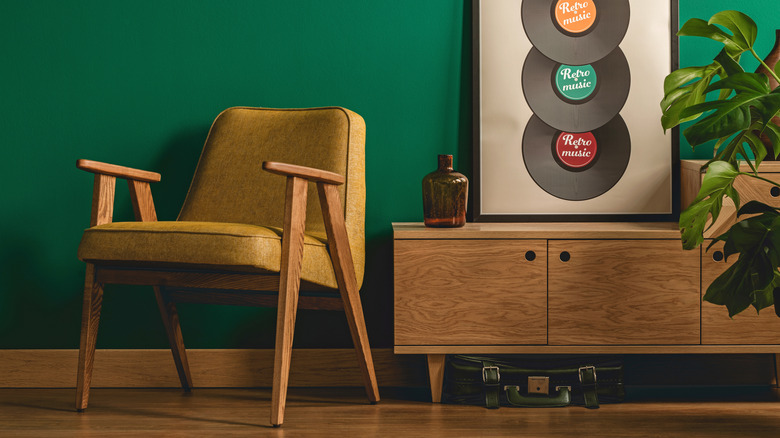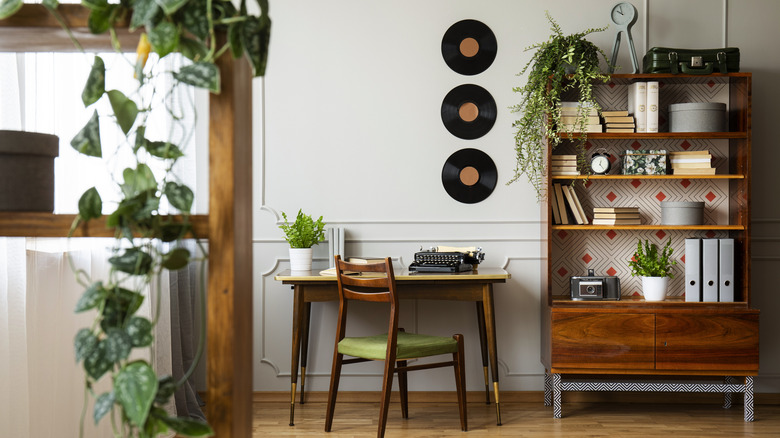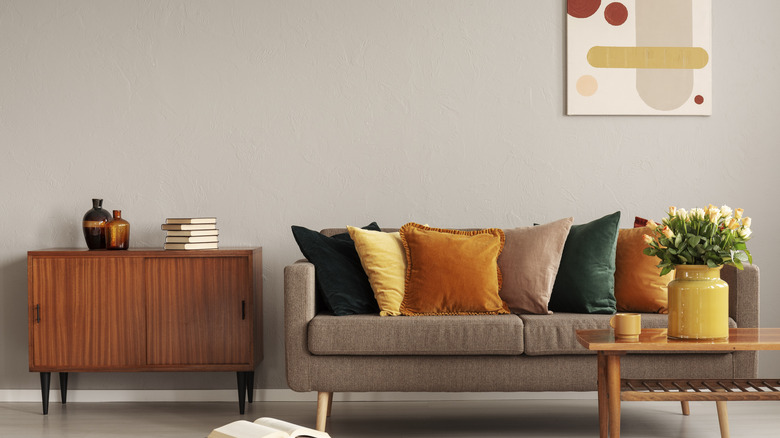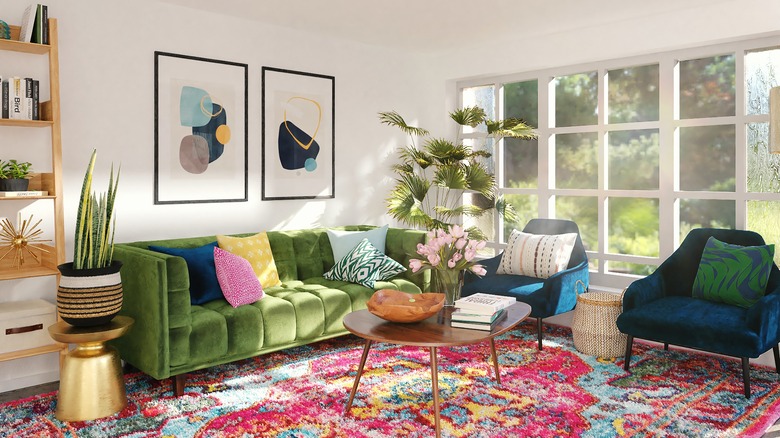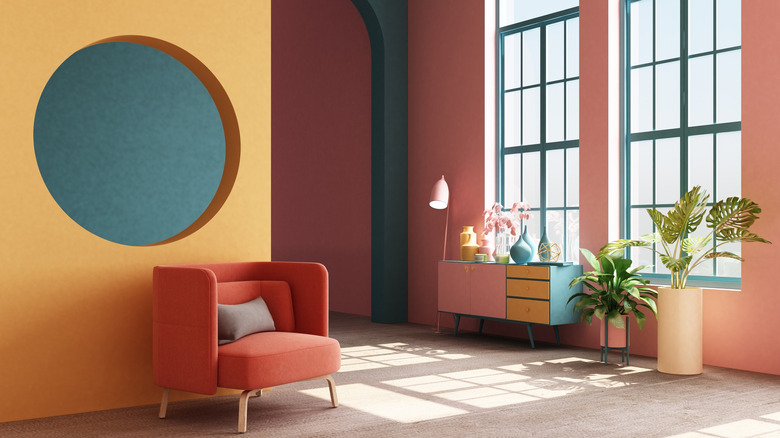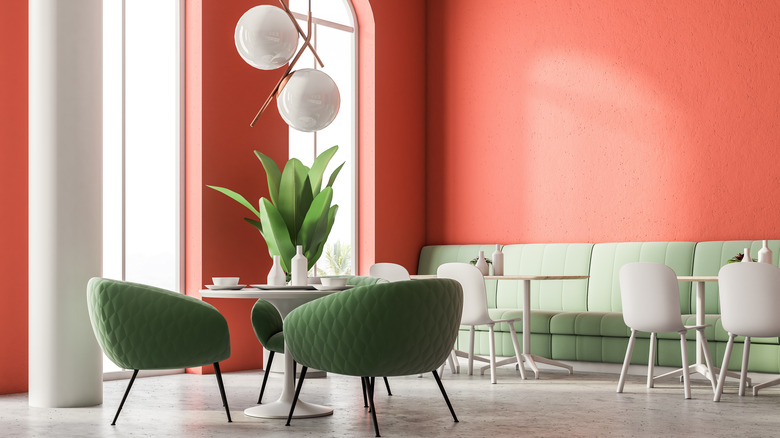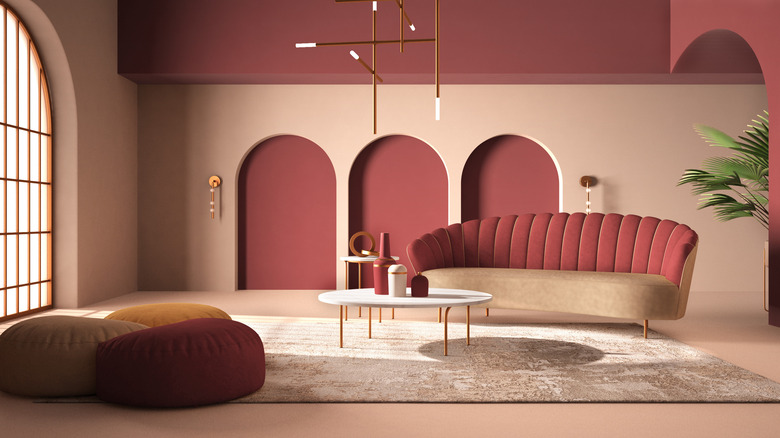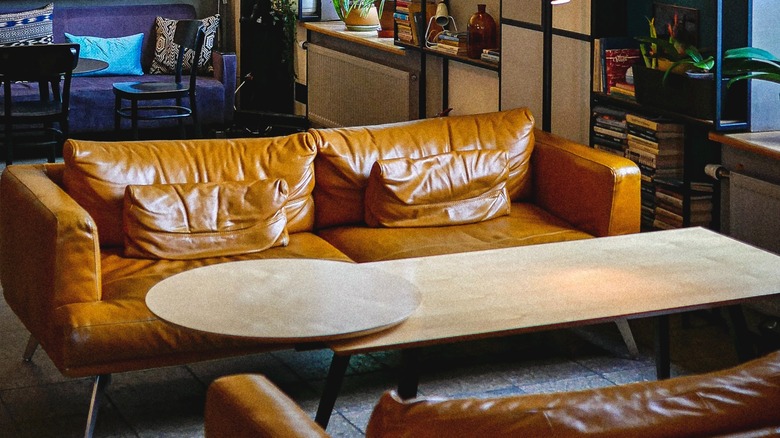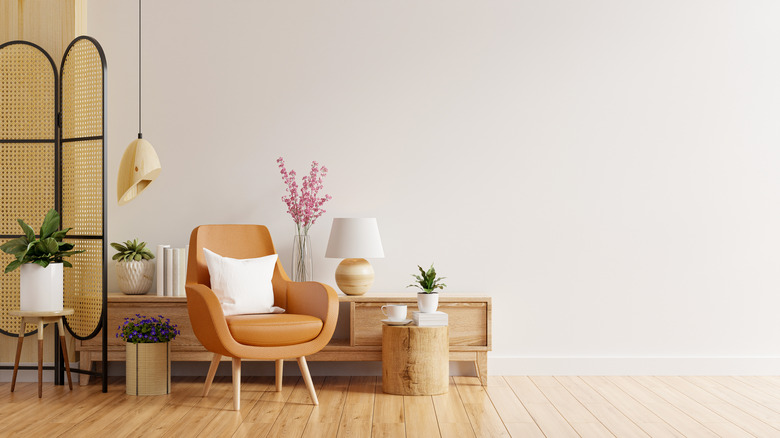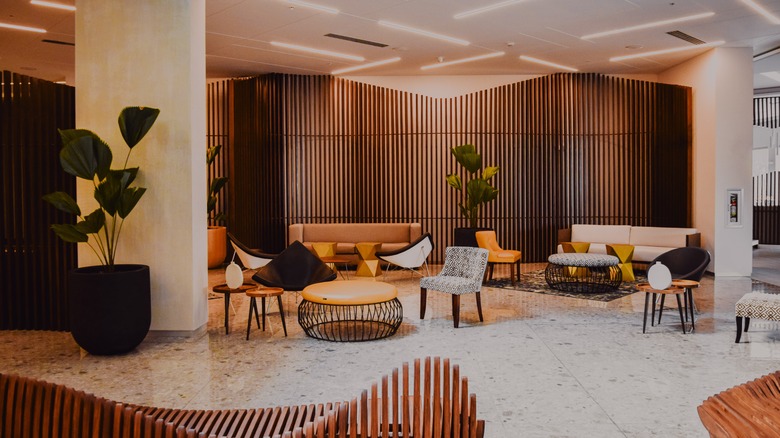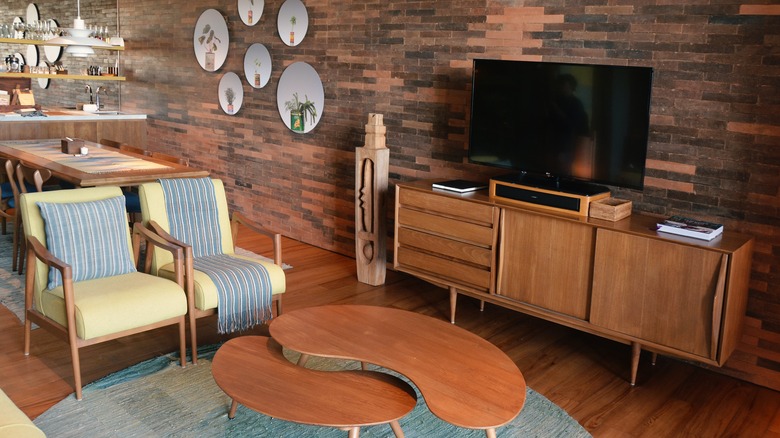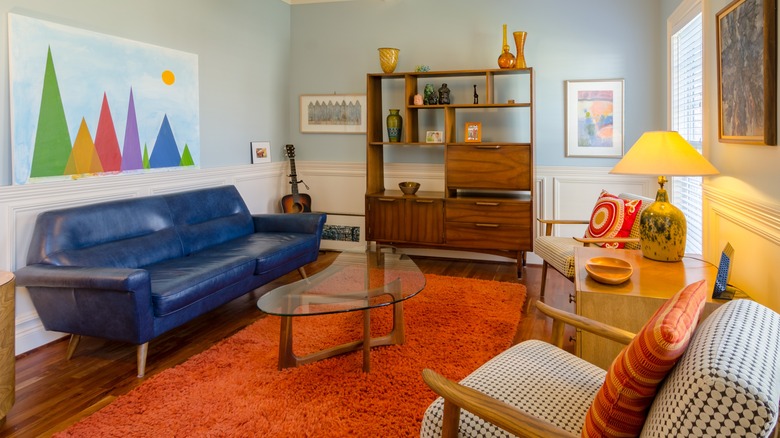15 Colors To Decorate With For A '70s Aesthetic
The retro style of the 1970s is clearly making a resurgence in both clothing and home décor. The funky silhouettes, mid century wood, bright colors, and mellow vibes are back, and they are here to stay — this time, though, with a touch of modernity and chicness. Take the wicker, but leave the shag carpet in the past.
Nailing the '70s aesthetic can be kind of difficult, however. The decade was far from a monolith, with cultural fascinations spanning from disco to rock and roll, funk to jazz, new wave to punk. The revival of '70s style does not completely adhere to the original rules, either, instead taking inspiration from the overall themes.
According to Better Homes & Gardens, some of the elements for a nouveau '70s design approach include wicker and rattan furniture, mixed textures, retro-style lamps and light fixtures, and bohemian influences. As for color, it's all about the warm shades. Specifically, rust orange, terracotta, mustard, egg yolk, emerald, and ruby. More modern colors include avocado and warm neutral shades. Keep reading for more inspiration and ideas for your '70s dream room.
1. Warm woods
Rich, warm wood tones were a hallmark of the '70s. For a very authentic approach to the decade's décor, fill your room with yellow and orange toned wood, from furniture to wall paneling.
2. Emerald green
Feature a lovely, rich, emerald green paired with some more playful dusty roses and burnt oranges for a more modern approach to the '70s aesthetic.
3. Sage and cream
For another more authentic approach to the '70s, opt for a relatively neutral color pallet composed of warm-toned woods and cream walls, with a pop of sage green.
4. Kelly green and mustard
Match your mid century modern furniture with a flatter mustard color, and contrast with a rich and vibrant kelly green for a funky design approach.
5. Subtle green influences
Green is a great color to work with when going for a '70s look. To keep things a bit more modern, bring in plenty of houseplants, rooting the color in the room's palette without overwhelming the space. Bring in some orange to contrast or other shades of green to complement the scheme.
6. Mix neutrals and warms
Warmer neutrals like beiges and warm woods will fit into any decade. To bring in more of a '70s influence, incorporate cozy hues such as burnt orange, rust, mustard, and even emerald.
7. Mix jewel tones
The '70s are often associated with rich, bold, and vibrant colors, in contrast to the flatter, mod tones of the '60s. Lean into this trend by mixing jewel tones, such as bold sapphire, ruby, and jade. Add in some mid century modern furniture for the full effect.
8. Retro warms
For a really funky and retro approach, exclusively use retro warm tones. You can incorporate creams, peaches, terracottas, dusty roses, and dandelion yellow, just to name a few. Break it up with a funky teal for a bit of variety and texture.
9. Grapefruit and sage
Grapefruit is a fun and very retro '70s-inspired color. Cool it down a bit with a light sage green, and modernize the scheme with sleek white furniture.
10. Shades of pink
Another staple design element of the '70s was featuring a single color in multiple shades, usually a bold or vibrant hue. For a more feminine retro vibe, consider mixing multiple shades of pink, from dark rose to light peach.
11. Yellow and oak
Leather was a very popular texture of the '70s, but darker finishes can be too heavy for the look you want to achieve. Opt for a golden or honey-colored leather paired with light oak furniture for a softer, but still retro look.
12. Ochre and beige
For a more '70s inspired but ultimately modern room, go for a largely beige and cream color pallet, adding in a hint of retro ochre.
13. Dark woods and beige
For more of a swanky '70s bachelor-pad look, mix creams and dark beiges with dark woods and bold blacks to create plenty of visual contrast and texture.
14. Warm woods, yellow, and blue
For another true to the decade look, pair authentic, warm-toned mid century furniture with brief touches of retro colors, such as a soft sunshine yellow with a subdued slate blue.
15. Bright and bold rainbow
For fans of color, lean into the funkiness of the '70s and mix all the colors of the rainbow. Keep things cohesive by using retro tones, for example swapping out royal blue for jewel tones, bright orange for burnt orange, etc.
